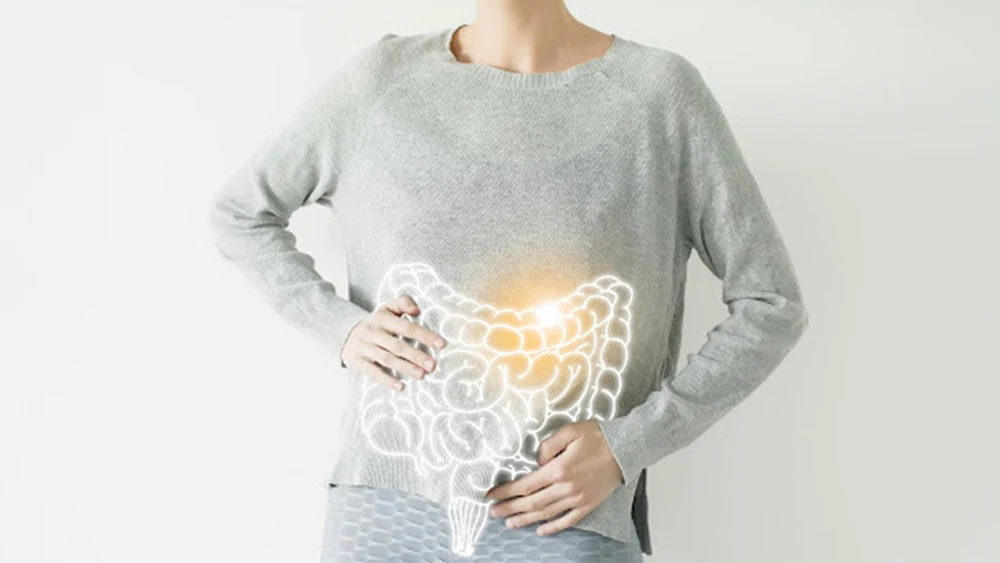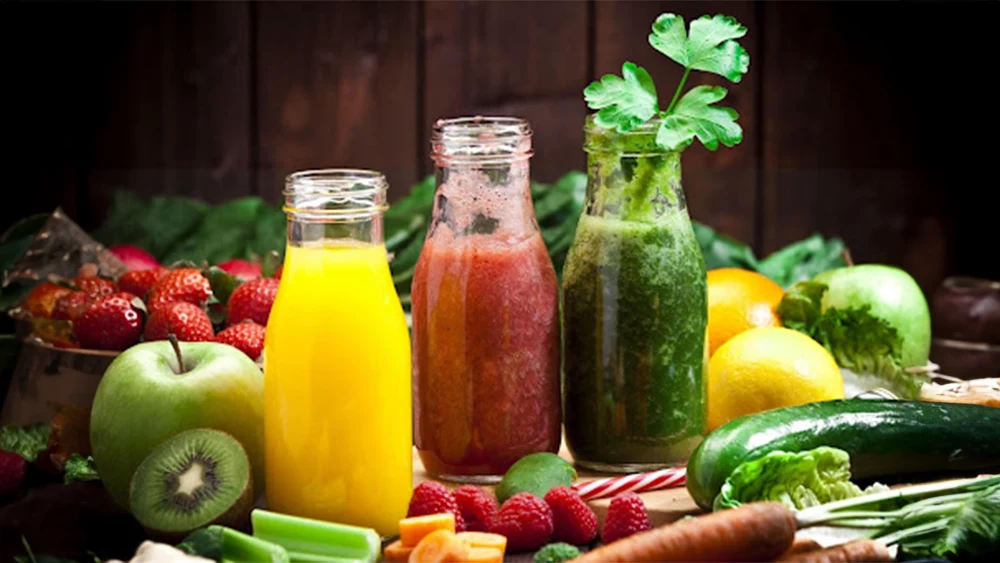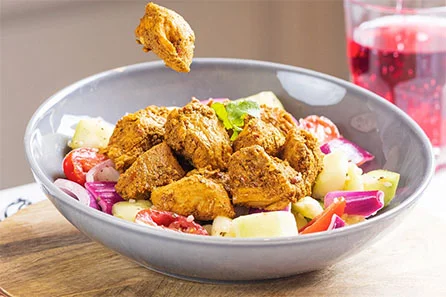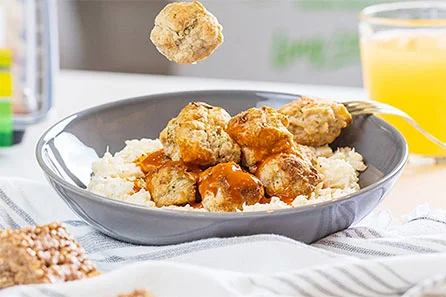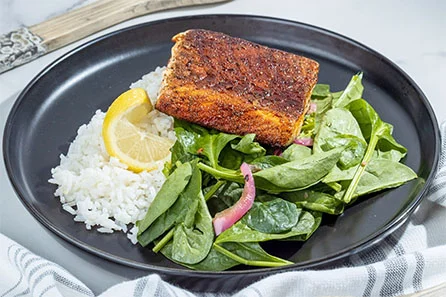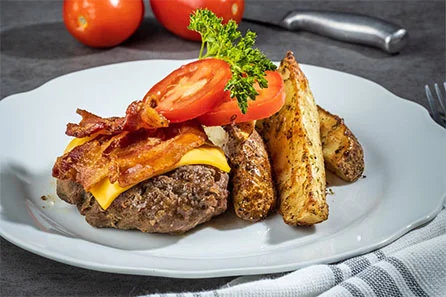Navigating Nutrition After a Juice Cleanse: A Comprehensive Guide
Embarking on a juice cleanse can be a transformative experience for your body and mind. It's a journey that flushes toxins, revitalizes your system, and paves the way for a fresh start towards healthier eating habits.
However, the journey doesn't end with the last drop of juice; what comes after is equally crucial. This comprehensive guide is designed to walk you through the essential steps of transitioning from a juice cleanse back to solid foods, ensuring you maintain the gains without overwhelming your rejuvenated system.
The Foundation of a Successful CleanseEmbarking on a juice cleanse is a commitment to your health and well-being, signifying a pause and reset for your digestive system. However, the foundation of a successful cleanse goes beyond simply selecting any juice off the shelf. It requires a thoughtful approach, starting with choosing the right kind of juices and understanding the importance of preparing your body and mind for the journey ahead.
Quality of Ingredients
The cornerstone of any effective cleanse is the quality of the juices you consume. Not all juices are created equal. Opting for cold-pressed juices made from organic, non-GMO fruits and vegetables ensures that you're getting the maximum amount of nutrients without the harmful pesticides and chemicals found in conventional produce. These nutrients are vital for detoxification processes, helping to flush out toxins while supplying your body with essential vitamins and minerals.
Nutrient Density
A successful cleanse also hinges on the nutrient density of the juices. The body requires a broad spectrum of vitamins, minerals, and enzymes to support the detoxification pathways. Cold-pressed juices from reputable sources like Arden's Garden are designed to deliver these nutrients in high concentrations, providing your body with the tools it needs to cleanse effectively. These juices often include a variety of greens, roots, and fruits that are known for their detoxifying properties, such as kale, beetroot, lemon, and ginger.
Preparation Phase
Before diving into a cleanse, it's crucial to prepare your body to ensure a smooth transition. Gradually reducing the intake of processed foods, caffeine, sugar, and alcohol a few days prior to starting your cleanse can significantly minimize potential detox symptoms like headaches and fatigue. This preparation phase is also an opportune time to increase your water intake, which can help start the hydration and flushing process early.
Mental Readiness
Mental preparedness is just as important as physical readiness. Setting clear goals and intentions for your cleanse can enhance your focus and commitment to the process. Whether it's to kickstart a healthier lifestyle, improve digestion, or simply give your body a rest, having a strong why can help you navigate the cleanse with purpose and resilience.
Continuous Support
Finally, a successful cleanse doesn't have to be a solitary journey. Engaging with a supportive community, whether it's through forums, social media groups, or with friends and family, can provide encouragement and motivation. Sharing experiences, challenges, and successes can enrich your cleanse experience, making it more enjoyable and sustainable.
Post-Cleanse Strategy
Looking beyond the cleanse, it's important to have a plan for transitioning back to solid foods. Incorporating the lessons learned and habits formed during the cleanse into your daily routine can help sustain the benefits in the long term. A gradual reintroduction of solid foods, prioritizing whole, nutrient-dense options, and maintaining hydration are key steps in preserving the cleanse's positive impacts.
Reintroducing Foods: The Path Forward
After completing a juice cleanse, your body is in a state of heightened sensitivity, having been reset and rejuvenated. This period offers a unique opportunity to carefully reintroduce solid foods, shaping your dietary habits for the better. The process should be gradual, mindful, and strategic, allowing your digestive system to adjust without overwhelming it. Here's a guide to navigate this crucial transition effectively, ensuring a smooth path forward in your post-cleanse journey.
Phase 1: Light and Easy
Start with foods that are easy on the digestive system. Your gut has had a break from digesting complex foods, so beginning with light, simple foods is key.
Soups and Broths: Begin with clear vegetable broths or soups. These are hydrating, easy to digest, and reintroduce your system to solid foods gently.
Steamed Vegetables: Soft, steamed vegetables like carrots, zucchini, and spinach are excellent choices. They're packed with nutrients but low in fiber, making them easier to digest.
Phase 2: Incorporate More Substance
As your digestive system begins to readjust, you can start incorporating more substantial foods, still focusing on easy digestion and nutrient density.
Soft Fruits: Add soft fruits such as bananas, avocados, and berries. These foods are nutrient-rich and introduce natural sugars and healthy fats back into your diet.
Whole Grains: Introduce small portions of cooked whole grains like quinoa, millet, or brown rice. They provide energy, fiber, and essential nutrients without being too heavy.
Phase 3: Proteins and Fats
Proteins and fats are essential for your body but can be more challenging to digest. Introduce them slowly and in moderation.
Lean Proteins: Incorporate lean proteins such as fish, chicken, or plant-based proteins like lentils and chickpeas. Choose easy-to-digest options to start, avoiding fried or heavily processed foods.
Healthy Fats: Add healthy fats from sources like nuts, seeds, and avocados. These support cellular health and energy but should be introduced gradually to assess your body’s response.
Mindful Eating Practices
Reintroducing foods is not just about what you eat but also how you eat. Mindful eating practices can significantly enhance your body's ability to adapt and benefit from your post-cleanse diet.
Chew Thoroughly: Take the time to chew your food well. This practice aids digestion and absorption of nutrients, making the transition smoother.
Listen to Your Body: Pay attention to how your body responds to reintroduced foods. If something doesn’t feel right, take a step back and reintroduce it more slowly or try alternatives.
Portion Control: Start with smaller portions to avoid overwhelming your digestive system. Gradually increase portion sizes as your body adjusts.
Foods to Approach With Caution
Certain foods should be reintroduced with caution due to their potential to cause digestive upset or negate the benefits of your cleanse.
Dairy Products: Dairy can be difficult for some people to digest. Introduce it slowly and opt for fermented dairy like yogurt or kefir, which can be easier to digest.
Processed and Sugary Foods: Minimize or avoid processed foods and those high in added sugars. These can quickly undermine the benefits of your cleanse.
Caffeine and Alcohol: Both can be harsh on a recently cleansed system. If you choose to reintroduce these, do so gradually and in moderation.
Foods to Avoid After a Cleanse
Completing a juice cleanse is a significant achievement that speaks volumes about your commitment to your health and wellness. This period of detoxification leaves your body in a more sensitive state, primed for nourishment and rejuvenation. As much as it's crucial to know what foods to reintroduce into your diet, it's equally important to recognize which foods to avoid in order to sustain the benefits of the cleanse. Here’s a comprehensive look at the types of foods you should steer clear of post-cleanse and why.
Foods to Avoid | Why to Avoid | Healthier Alternatives |
Processed and Fast Foods | High in sugars, fats, preservatives; burden the digestive system. | Whole, nutrient-dense foods; homemade meals. |
High-Sugar Foods | Spike blood sugar levels, leading to crashes and cravings. | Natural sugars from fruits; small amounts of honey or maple syrup. |
Dairy Products | Can cause digestive upset and bloating. | Fermented dairy like yogurt or kefir; plant-based alternatives. |
Caffeine and Alcohol | Dehydrating the body may irritate the digestive system. | Herbal teas, decaffeinated coffee; moderate alcohol later on. |
Heavy Red Meats | High in saturated fats; taxing on the digestive system. | Fish, poultry, plant-based proteins. |
Fried and Greasy Foods | High in unhealthy fats and calories; lead to discomfort. | Foods prepared via steaming, baking, or grilling. |
Simplifying Your Post-Cleanse Diet
After completing a cleanse, transitioning back to a regular diet while maintaining the cleanse's benefits can be challenging. A simplified approach to your post-cleanse diet can help you integrate healthy eating habits into your lifestyle without feeling overwhelmed. Here’s how to keep it straightforward yet effective:
Strategy | Focus | Benefits |
Emphasize Whole Foods | Choose foods in their natural state. | Provides essential nutrients, supports detoxification and health. |
Keep Hydration a Priority | Continue drinking plenty of water. | Aids digestion, maintains energy levels, supports natural detox processes. |
Introduce Foods Gradually | Start with easily digestible foods. | Prevents digestive discomfort, allows monitoring of body reactions to foods. |
Opt for Light Meals | Prefer light, nutrient-dense meals. | Maintains cleanse benefits like lightness and energy, promotes better digestion. |
Practice Mindful Eating | Eat slowly and attentively. | Improves relationship with food, enhances digestion, prevents overeating. |
Plan Your Meals | Plan meals in advance. | Helps make healthier choices, reduces temptation for processed foods. |
Limit Processed Foods and Sugar | Minimize intake of processed items and added sugars. | Sustains detox benefits, improves energy levels, reduces cravings. |
Listen to Your Body | Adjust diet based on body's responses. | Ensures diet supports unique health needs and wellness goals. |
Stay Flexible | Allow for dietary flexibility. | Promotes a sustainable, enjoyable diet, reducing feelings of deprivation. |
Practical Tips for Post-Cleanse Eating
Start Your Day Right: Incorporate green juices and fresh fruits into your breakfast for a nutrient-rich start to the day.
Lunch and Dinner: Opt for balanced meals with a focus on vegetables, whole grains, and quality proteins. Healthy fats like avocado and raw nuts should also have a place in your diet.
Hydration and Cleansing: Regular hydration and periodic juice cleanses can support ongoing detoxification and health.
Avoid Processed Foods: Processed sugars, grains, and dairy can undermine your health goals. Choose natural sugars and clean, gluten-free options instead.
Lifestyle Considerations: Exercise, stress management, and adequate sleep are all integral to maintaining your health and weight post-cleanse.
Conclusion
Transitioning back to solid foods after a juice cleanse is a critical phase that requires thoughtful choices to maintain and build upon the cleanse's benefits. By focusing on whole, nutrient-dense foods, preparing your meals, and avoiding processed foods and certain substances, you can ensure a smooth transition and promote long-term health and wellness. Remember, the goal is not just to return to old eating habits but to embrace a new, healthier way of living that supports your body's needs and your wellness goals.

